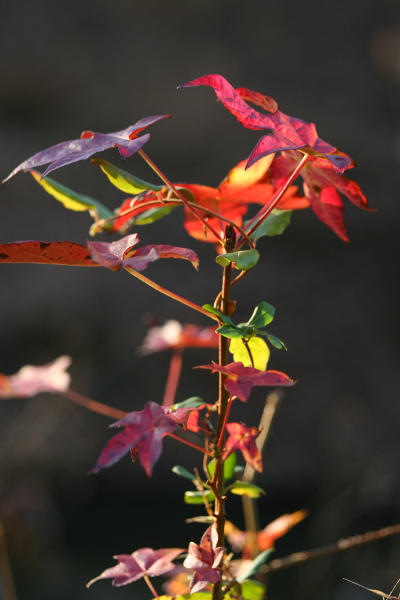 I have a couple more posts in the lineup right now, but I think I only have time for one this morning, so we’ll just have to see when the others arrive. It’s a shame, because one is pretty damn interesting, but I doubt I can do it justice if I rush it, so we’ll go with something more visceral and less thoughtful at the moment.
I have a couple more posts in the lineup right now, but I think I only have time for one this morning, so we’ll just have to see when the others arrive. It’s a shame, because one is pretty damn interesting, but I doubt I can do it justice if I rush it, so we’ll go with something more visceral and less thoughtful at the moment.
It’s gotten to be the dead season around here, so when we were out a few days back searching for photo subjects, I wasn’t holding out a lot of hope for any kind of interesting fauna, and even the flora is pretty sparse – the majority of the trees have shed their leaves and we’re largely into the duochromatic winter phase where everything is brown or grey. [A stupid quick side note: while there is a general consensus on the meaning of monochromatic, meaning one color – even when the most frequent displays of the term actually refers to no color at all, just a range of greys – the word to define two colors is unclear and largely a matter of preference; it can be duochromatic, or bichromatic, or dichromatic, but each of these have other specific meanings depending on the environment. I’m sticking with duo because it’s the most self-evident.] Nonetheless, a small American sweetgum sapling (Liquidambar styraciflua) entangled with an unidentified vine were rashly defying the winter gods by flaunting some bright colors – the green leaves of the vine set off the reds and oranges of the sweetgum nicely. There wasn’t a whole lot I could do with it, but it was something.
Then as I passed it and started facing more towards the sun, I could see the backlighting was bringing up the color and textures of the leaves, but more importantly, there was a section of stream in the immediate distance behind it that was producing ripples, and from that angle at that time of day this meant a glitter trail of sparkles. There was just one position only a handful of centimeters across that would work, but that’s what you have to be alert for. I lined up and fired off a couple of frames, then pointed out the opportunity to Mr Bugg.

The aperture had to be wide open to render the distant sparkles as soft circles, rather than in the shapes of the aperture opening (anything from pentagonal to nonagonal depending on the number of aperture blades in the lens,) and of course this meant focus was pretty selective – not all of the leaves, or even a single leaf, could be in sharp focus. And you can try to use those sparkles as a distinct shape in the background, but it’s tricky: each reflection from moving water lasts only a fraction of a second, so what you get as the shutter trips is unpredictable, and if you choose an area of very dense sparkles to try and increase the odds, you’re just as likely to get too many, which run together and defeat the nice little orbs which give the image character – notice how the shaping to the brightness on the right has become indistinct, not bubbles at all. And since the position of the sparkles will change with sun angle and perhaps blocking tree trunks, the window of opportunity for such things can be pretty narrow, perhaps 20 minutes or less. I’ve done better, but for the slow season, it was a modicum of success and a good illustration of examining the options of a subject.
By the way, if you really want to understand why those circles appear (and why “orb” photographs are utter nonsense,) I have an illustrated page here, and another example here.




















































